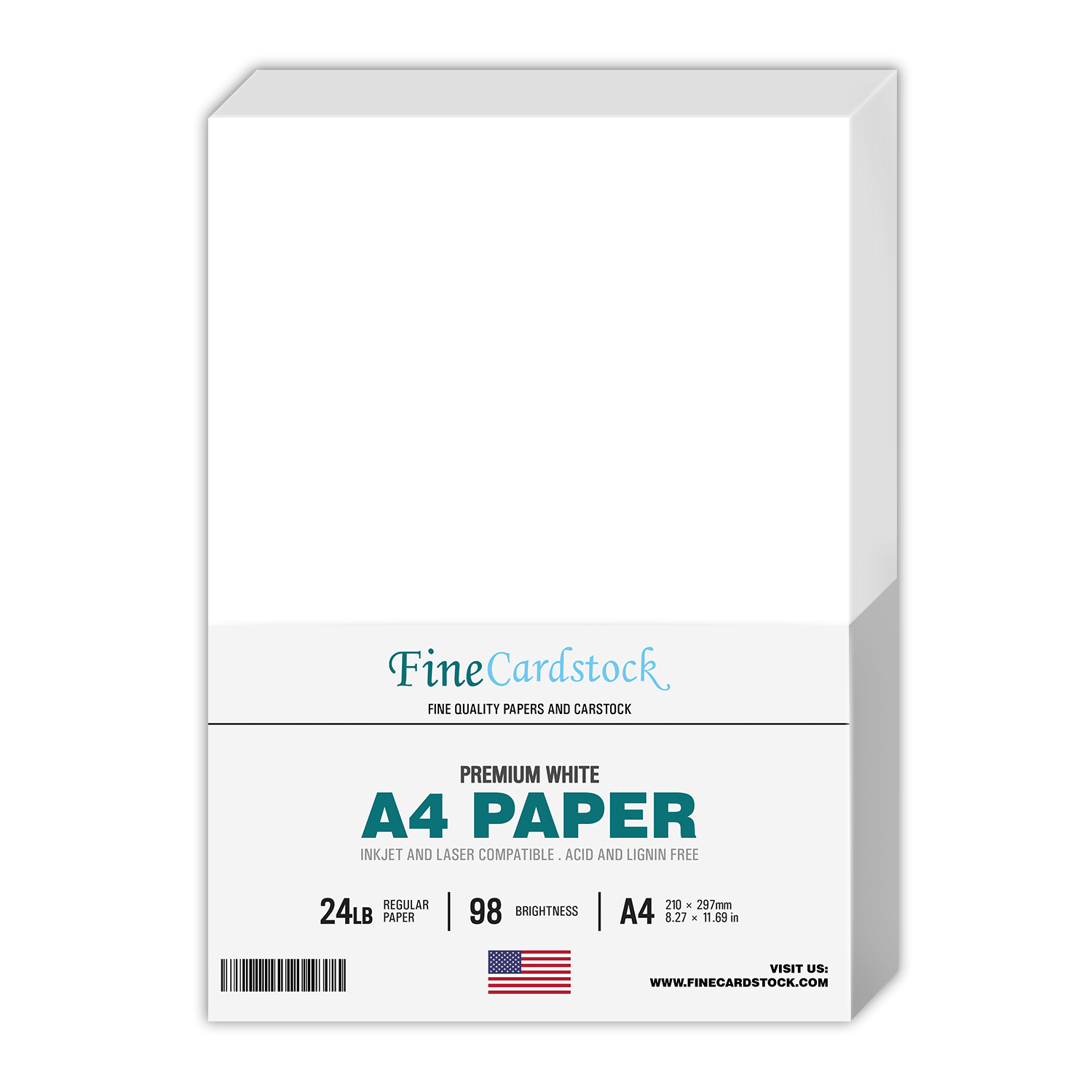a4 paper is a widely used international paper size, commonly employed for documents, letters, books, and magazines. It is slightly larger than the North American Letter size paper and has a different aspect ratio. Understanding the dimensions and specifications of a4 paper in inches is crucial for proper printing, design, and document handling. This comprehensive guide delves into everything you need to know about A4 paper in inches, ensuring accurate measurements and seamless compatibility in your projects.
Paper Size

A4 Paper and Its Uses
A4 paper, as defined by the International Organization for Standardization (ISO), is the standard size for paper used worldwide except in North America and parts of South America. The dimensions of A4 paper make it versatile for various applications such as printing documents, brochures, flyers, and reports. The consistent sizing of A4 paper ensures compatibility across different devices and software, making it a popular choice for businesses and individuals alike.
The dimensions of A4 paper also make it suitable for creating booklets, magazines, and catalogs due to its easy folding and binding properties. Its standardized size simplifies the printing and reproduction process, allowing for efficient distribution and sharing of information. Additionally, A4 paper is commonly used in academic settings for printing assignments, essays, and research papers, further solidifying its importance in everyday tasks.
Technical Specifications of A4 Paper
A4 paper follows the ISO 216 standard, which specifies its dimensions and aspect ratio. The key technical specifications of A4 paper are as follows:
- Width: 210 millimeters (mm) or 8.27 inches
- Height: 297 millimeters (mm) or 11.69 inches
- Aspect Ratio: 1.414 (√2)
The aspect ratio of A4 paper plays a crucial role in its design and functionality. With an aspect ratio of 1.414, A4 paper maintains consistent proportions when folded or scaled, ensuring that the content remains intact and readable. This harmonious relationship between width and height enables seamless transitions between different viewing formats, whether in print or digital media.
Dimensions of A4 Paper in Inches and Centimetres
Standard Measurements of A4 Paper
[
\begin
\hline
\textbf \
\hline
\text & 8.27 \
\hline
\text & 11.69 \
\hline
\text & 21.0 \
\hline
\text & 29.7 \
\hline
\end
]
The standard measurements of A4 paper provide a clear reference point for designers, printers, and individuals working with this paper size. By understanding the exact dimensions in both inches and centimeters, users can ensure accurate layouts, margins, and print settings for their A4 documents. Whether preparing a presentation, crafting a brochure, or designing a flyer, knowing the precise measurements of A4 paper is essential for achieving professional results.
Converting A4 to Letter Size
When working with A4 paper in an environment that uses the Letter size format, converting between the two sizes is necessary to maintain consistency and compatibility. The conversion between A4 and Letter size is as follows:
- A4 to Letter Size Conversion:
- Width: 8.27 inches
- Height: 11.69 inches
By aligning the dimensions of A4 paper with the Letter size format, users can seamlessly adapt their designs, layouts, and prints to suit different paper standards. This flexibility in conversion ensures that content created on A4 paper can be easily translated to Letter size without losing vital information or altering the overall aesthetics of the document.
Cutting A4 Paper to Different Sizes

Folding and Trimming A4 Paper
A4 paper’s dimensions allow for practical folding and trimming options to create smaller sizes for various purposes. Whether producing leaflets, pamphlets, or notecards, cutting A4 paper can be done accurately to achieve specific dimensions. Here are common folding and trimming techniques for A4 paper:
- Half-Fold: Fold the A4 paper in half along the shorter edge to create two A5-sized sheets.
- Tri-Fold (Brochure Fold): Divide the A4 paper into three equal sections by folding it twice, resulting in a compact brochure size.
- Quarter-Fold: Fold the A4 paper in half and then fold each half again to obtain four A6-sized sheets.
These folding methods demonstrate the versatility of A4 paper and its ability to adapt to different layout requirements. By mastering these techniques, individuals can optimize the use of A4 paper for diverse projects, from promotional materials to event invitations.
Applications of A4 Paper
A4 paper finds extensive usage across various industries and sectors due to its standardized dimensions and compatibility with printing equipment. Some common applications of A4 paper include:
- Business Documents: Printing reports, memos, invoices, and business correspondence on A4 paper for professional communication.
- Educational Materials: Creating handouts, worksheets, exams, and study guides using A4 paper in educational settings.
- Marketing Collateral: Designing flyers, brochures, posters, and business cards on A4 paper for marketing and promotional purposes.
- Art and Crafts: Using A4 paper for origami, card making, scrapbooking, and other creative projects that require precision cutting and folding.
The versatility of A4 paper makes it a staple in offices, schools, print shops, and homes, catering to a wide range of printing and design needs. Its widespread availability and cost-effectiveness further contribute to its popularity as the go-to paper size for everyday tasks.
Environmental Characteristics of A4 Paper
Sustainability and Eco-Friendliness
A4 paper manufacturers are increasingly focusing on sustainability and eco-friendliness to reduce the environmental impact of paper production. Many A4 paper products now come from responsibly managed forests or recycled materials, promoting conservation efforts and reducing deforestation. Additionally, advancements in paper manufacturing technologies have led to improved energy efficiency and waste reduction in the production process.
Recycling and Waste Reduction
Recycling initiatives play a vital role in extending the lifecycle of A4 paper and minimizing waste accumulation. By recycling used A4 paper, organizations and individuals can contribute to resource conservation and reduce landfill waste. Furthermore, proper waste management practices, such as implementing duplex printing and reducing unnecessary printing, help conserve paper resources and lower overall environmental footprint.
Carbon Footprint and Emissions
Efforts to measure and reduce the carbon footprint of A4 paper production are underway to address climate change concerns. By optimizing transportation, energy consumption, and manufacturing processes, paper companies aim to decrease greenhouse gas emissions associated with A4 paper production. Sustainable practices, such as carbon offsetting and renewable energy utilization, further enhance the environmental performance of A4 paper products.
Conclusion
In conclusion, A4 paper’s dimensions in inches play a significant role in various aspects of design, printing, and document management. By understanding the technical specifications, standard measurements, and conversion techniques related to A4 paper, individuals can streamline their workflow and ensure optimal results in their projects. From cutting and folding A4 paper to leveraging its applications across different industries, the versatility and reliability of this paper size make it an indispensable tool for everyday tasks. Moreover, the growing emphasis on environmental sustainability underscores the importance of responsible paper use and waste reduction practices in preserving our natural resources for future generations. Next time you reach for a sheet of A4 paper, remember the wealth of possibilities it offers in helping you bring your ideas to life.